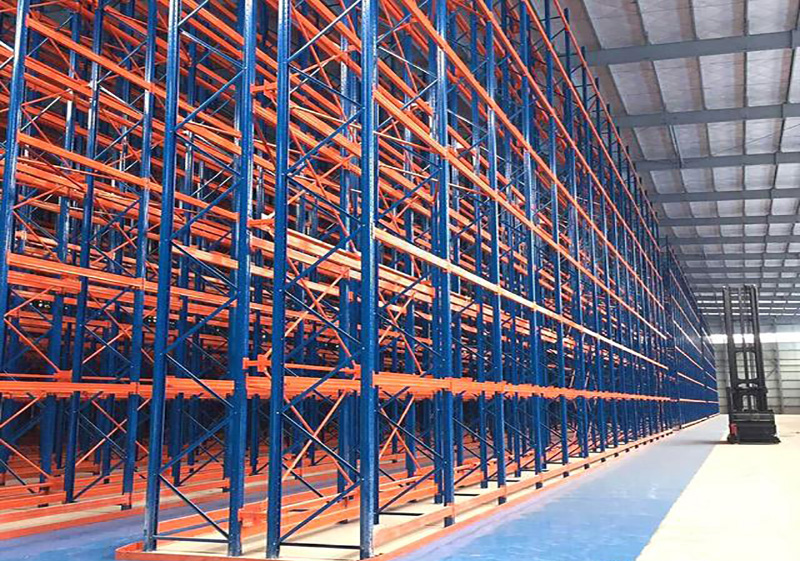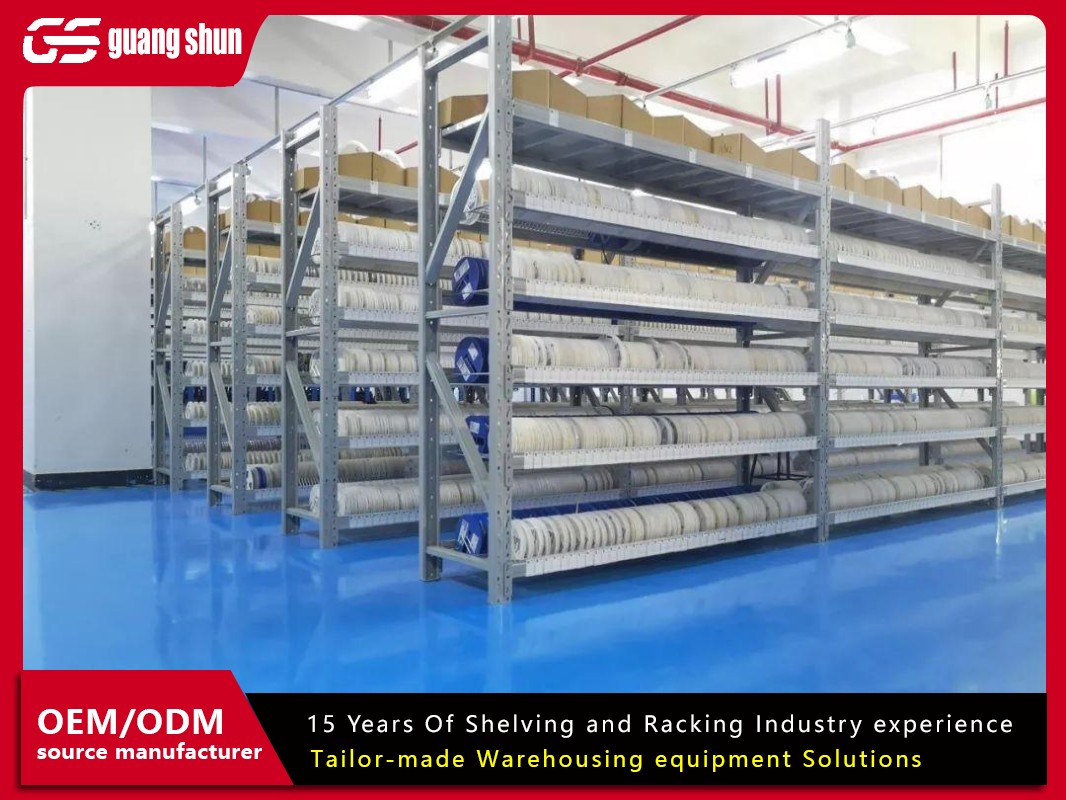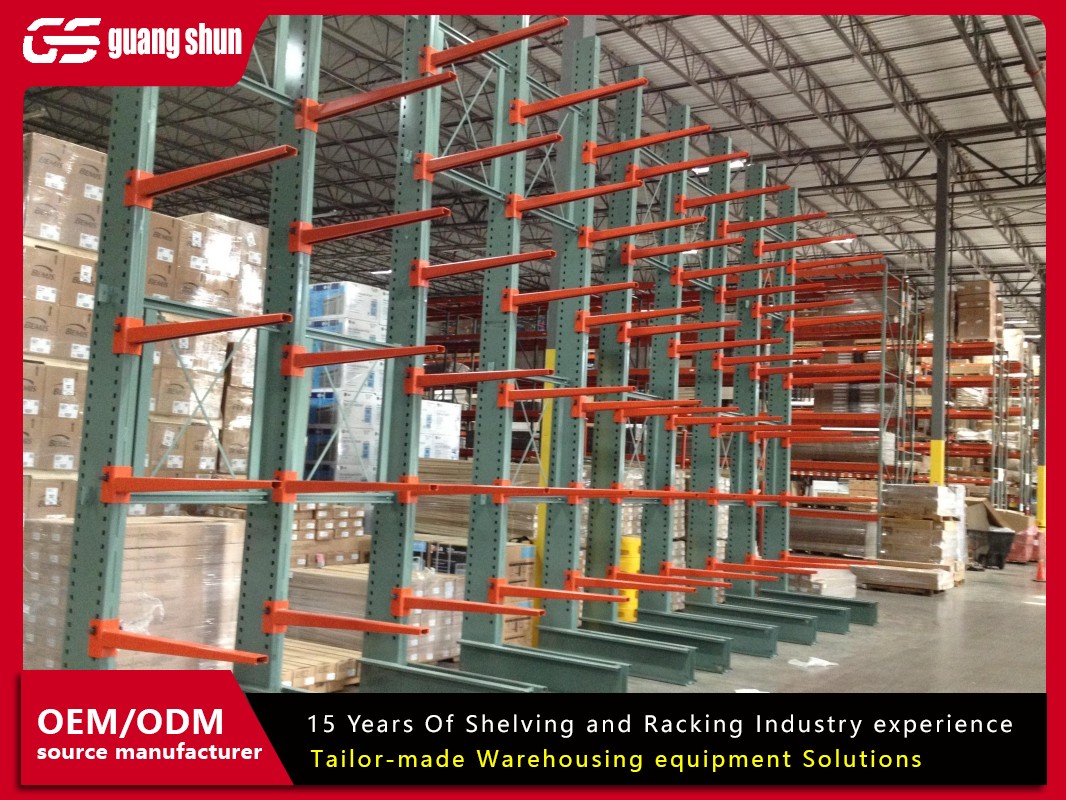In the world of warehouse storage solutions, pallet racking stands as a cornerstone for organizing and optimizing space. Understanding the parts of pallet racking is crucial for anyone involved in logistics, warehouse management, or industrial operations. These components form the backbone of efficient storage systems, enabling businesses to handle inventory safely and effectively. Whether you're setting up a new facility or upgrading an existing one, knowing the key parts of pallet racking can help you make informed decisions that enhance productivity and reduce costs. This guide delves into the essential aspects of pallet racking components, covering their functions, types, selection criteria, installation, and cost considerations. By the end, you'll have a solid grasp of how these parts of pallet racking contribute to a streamlined warehouse environment, and we'll address common questions to clarify any uncertainties. Let's explore the fundamental parts of pallet racking that drive modern storage solutions.

The Main Parts of Pallet Racking and Their Functions
When discussing the parts of pallet racking, it's important to start with the core components that make up these systems. Pallet racking is designed to store palletized goods in an organized manner, and each part plays a specific role in ensuring stability and accessibility. The primary parts of pallet racking include upright frames, beams, braces, and decking. Upright frames, often called columns, are the vertical supports that bear the load and form the structure's skeleton. They come with punched holes or slots for adjustable beam placement, allowing customization based on pallet sizes. Beams are the horizontal members that connect to the uprights, providing the shelves where pallets rest. These parts of pallet racking are critical for load distribution and are typically secured with safety locks to prevent dislodgement. Braces, which are diagonal or horizontal supports between uprights, add rigidity and resistance to seismic forces or impacts. Another key component is the decking, which can be wire mesh or solid panels, offering a surface for smaller items or enhancing safety by preventing falls. Additionally, accessories like row spacers and shims are integral parts of pallet racking that ensure alignment and stability in larger installations. Understanding these parts of pallet racking helps in assessing their functions: upright frames handle vertical loads, beams support horizontal weight, braces reinforce against sway, and decking improves usability. Proper knowledge of these parts of pallet racking is essential for maximizing storage density and maintaining safety standards in warehouses globally.
Different Types of Pallet Racking Systems and Their Unique Parts
The parts of pallet racking can vary significantly depending on the type of system employed. In the international Storage equipment field, commo
n types include selective, drive-in, push-back, and pallet flow racking, each with distinct components tailored to specific storage needs. For instance, in selective pallet racking—the most widely used type—the parts of pallet racking are relatively standard, featuring upright frames, beams, and braces as described earlier. However, in drive-in racking, which is designed for high-density storage, the parts of pallet racking include guide rails and dedicated entry paths that allow forklifts to drive into the structure. This system often uses continuous uprights and specially designed beams to support deeper pallet placements. Push-back racking introduces cartridges or carriages as unique parts of pallet racking; these enable last-in, first-out (LIFO) inventory management by allowing pallets to be stored on nested carts that slide along inclined rails. Another variant, pallet flow racking, incorporates roller tracks and braking systems as critical parts of pallet racking to facilitate first-in, first-out (FIFO) flow, reducing handling time. In cantilever racking, which is ideal for long or bulky items, the parts of pallet racking consist of arms mounted on vertical columns, eliminating the need for front-facing uprights. Each of these systems highlights how the parts of pallet racking are adapted to optimize space, accessibility, and load capacity. By comparing these types, businesses can identify which parts of pallet racking best suit their operational requirements, whether for general storage or specialized applications like cold storage or high-turnover environments.
How to Choose the Right Parts of Pallet Racking for Your Warehouse
Selecting the appropriate parts of pallet racking is a critical step in designing an efficient warehouse layout. This process involves evaluating factors such as load capacity, space constraints, inventory turnover, and safety regulations. First, assess the weight and dimensions of your palletized goods to determine the required specifications for the parts of pallet racking, like beam strength and upright frame capacity. For example, heavier loads may necessitate reinforced beams and thicker uprights, which are essential parts of pallet racking for preventing overloading and ensuring durability. Next, consider the warehouse height and floor plan; adjustable parts of pallet racking, such as beams with multiple locking points, offer flexibility for varying pallet sizes and future expansions. It's also important to factor in the type of forklifts used, as this influences the selection of parts of pallet racking like clearances and beam heights. Additionally, compliance with international standards, such as those from the Rack Manufacturers Institute (RMI) or European norms, should guide your choice of parts of pallet racking to ensure structural integrity and worker safety. When sourcing these components, look for suppliers who provide detailed specifications and customization options for the parts of pallet racking. For instance, in high-seismic zones, opting for braced frames and impact-resistant parts of pallet racking can mitigate risks. Ultimately, a thorough needs analysis will help you choose the right parts of pallet racking that balance cost, efficiency, and longevity, tailored to your specific warehouse operations.
Installation and Maintenance Best Practices for Parts of Pallet Racking
Proper installation and maintenance are vital for the longevity and safety of the parts of pallet racking. Incorrect assembly can lead to structural failures, while neglect in upkeep may result in costly repairs or accidents. During installation, it's crucial to follow manufacturer guidelines for each of the parts of pallet racking. This includes ensuring that upright frames are plumb and securely anchored to the floor, beams are locked into place at the correct height, and braces are properly attached to prevent rack sway. Using trained professionals for installing the parts of pallet racking reduces errors and ensures compliance with safety standards. Regular maintenance involves inspecting the parts of pallet racking for signs of damage, such as bent beams, cracked uprights, or loose connections. Implement a schedule for routine checks—ideally quarterly—focusing on high-traffic areas where the parts of pallet racking are prone to impact from forklifts. Cleaning and lubricating movable parts of pallet racking, like adjustable components, can also extend their lifespan. Additionally, document any modifications or repairs to the parts of pallet racking to maintain a history of system integrity. In case of damage, replace compromised parts of pallet racking immediately to avoid cascading failures. Training staff on safe handling practices around these parts of pallet racking further enhances operational safety. By prioritizing proper installation and proactive maintenance of the parts of pallet racking, warehouses can minimize downtime, reduce risks, and maximize the return on investment in their storage infrastructure.

Cost and Pricing Factors for Parts of Pallet Racking
Understanding the cost implications of the parts of pallet racking is essential for budget planning and procurement. The price of these components can vary based on material quality, design complexity, and market demand. Generally, the parts of pallet racking are made from steel, with factors like gauge thickness and coating (e.g., powder coating for corrosion resistance) influencing cost. For example, high-strength steel upright frames and beams tend to be more expensive but offer better durability, making them a wise investment for heavy-duty applications. The type of racking system also affects the pricing of the parts of pallet racking; selective racking components are often more affordable than specialized parts of pallet racking for drive-in or push-back systems, which require additional engineering. Volume purchases can reduce the per-unit cost of the parts of pallet racking, so consider bulk buying if scaling operations. Additionally, installation and customization services add to the overall expense of the parts of pallet racking. It's advisable to obtain quotes from multiple suppliers to compare prices for the parts of pallet racking, while also evaluating warranties and after-sales support. In the long term, investing in high-quality parts of pallet racking can lead to lower maintenance costs and fewer replacements, providing better value. Keep an eye on global steel price trends, as they directly impact the cost of the parts of pallet racking. By analyzing these factors, businesses can make cost-effective decisions when acquiring the parts of pallet racking, ensuring they meet storage needs without exceeding budgets.
FAQs About Parts of Pallet Racking
Q1: What are the most critical parts of pallet racking to inspect for safety?
A1: The most critical parts of pallet racking to inspect include the upright frames for any bending or damage, beams for secure locking and deformation, and braces for proper connection. Regular checks on these parts of pallet racking help prevent accidents and ensure structural integrity, as they bear the primary load and stability functions.
Q2: How do I determine the load capacity for the parts of pallet racking in my warehouse?
A2: To determine the load capacity for the parts of pallet racking, refer to the manufacturer's specifications for each component, such as beams and uprights. Consider factors like uniform load distribution and the weight of your palletized goods. It's often recommended to consult with an engineer to assess the parts of pallet racking based on your specific inventory and warehouse conditions.
Q3: Can I mix and match parts of pallet racking from different manufacturers?
A3: Mixing and matching parts of pallet racking from different manufacturers is generally not advised, as components may not be compatible in terms of dimensions, tolerances, or safety standards. Using unified parts of pallet racking from a single supplier ensures proper fit and reduces the risk of system failure.
Q4: What are the common materials used in manufacturing parts of pallet racking?
A4: The common materials for parts of pallet racking are typically steel, including carbon steel or high-strength steel, often coated with finishes like powder coating or galvanization for corrosion resistance. These materials are chosen for the parts of pallet racking to provide durability and support heavy loads in various environmental conditions.
Q5: How often should I replace the parts of pallet racking in a high-usage warehouse?
A5: In a high-usage warehouse, the parts of pallet racking should be replaced based on regular inspection findings, such as visible damage or reduced performance. Generally, beams and uprights may last 10-20 years with proper maintenance, but high-impact areas might require more frequent replacement of the parts of pallet racking to maintain safety and efficiency.
In summary, the parts of pallet racking are fundamental to creating efficient, safe, and scalable warehouse storage systems. From the basic components like upright frames and beams to specialized parts in different racking types, each element plays a vital role in optimizing space and handling inventory. By understanding how to select, install, and maintain these parts of pallet racking, businesses can enhance operational efficiency while managing costs effectively. As the global demand for advanced storage facilities grows, staying informed about the parts of pallet racking will empower you to make smarter investments and adapt to evolving logistics challenges. Remember, prioritizing quality and safety in the parts of pallet racking not only protects your assets but also supports long-term business growth.







